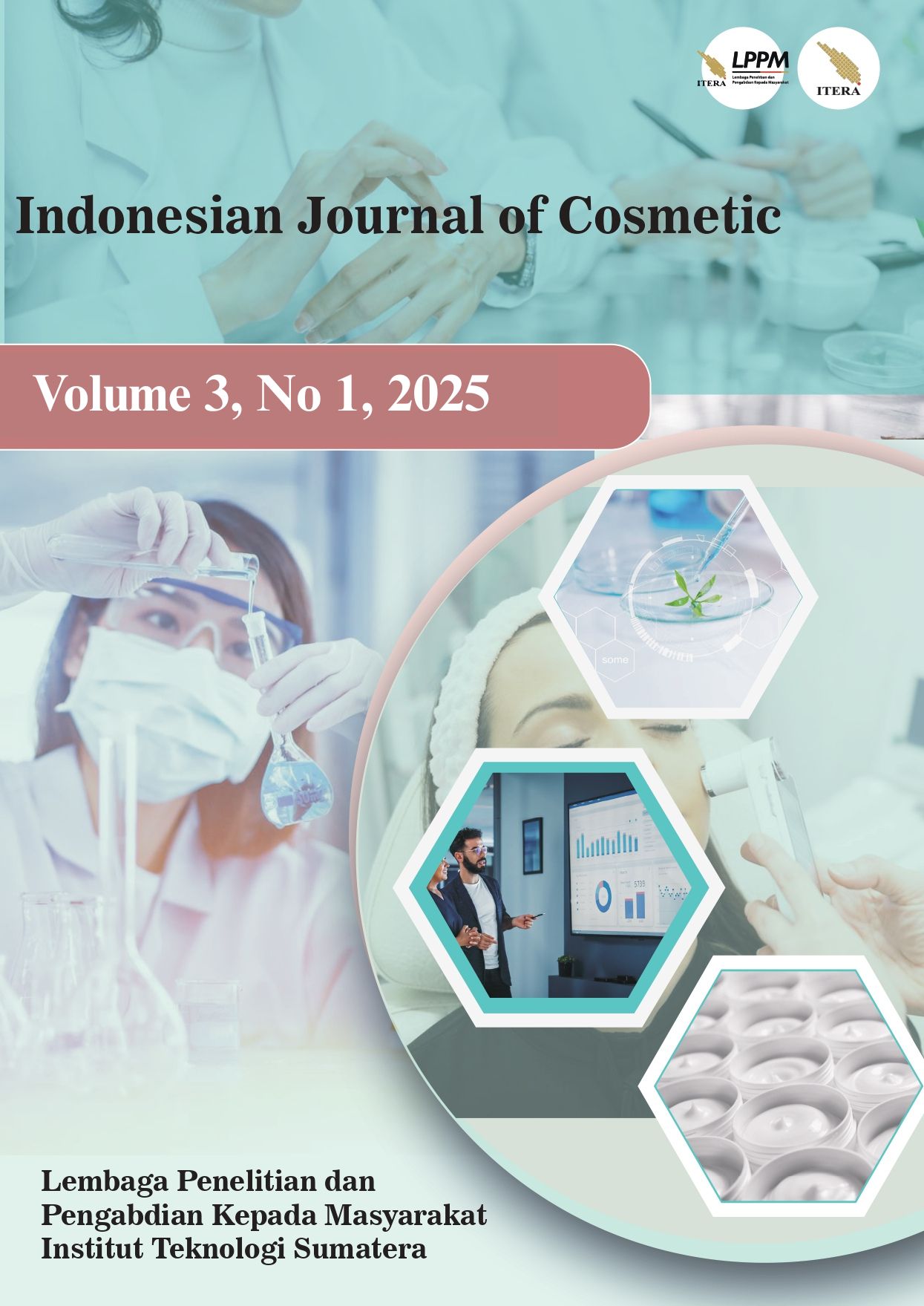INESIA LOTION INSTABILITY: EFFECTS OF OPACIFIER AND THICKENER CONCENTRATION AND REFORMULATION
Abstract
This study aims to analyze the effect of opacifier (Titanium Dioxide) and thickener (Carbomer) concentrations on phase instability in Inesia Hand and Body Lotion Midsummer products, and to formulate reformulation solutions to improve their stability. Initial observations on the commercial product (Formula F1) showed severe phase instability, characterized by two-layer separation after 27 hot-cold cycle tests. To address this, three experimental formulas (F3, F4, F5) were designed by varying the concentrations of Carbomer and Titanium Dioxide, using F1 as an unstable control and F2 as a stable control. Accelerated stability test results over 27 cycles showed that Carbomer concentration was the dominant factor in determining emulsion stability. Formulas F1 and F4, with low Carbomer concentrations (0.12% and 0.14%), experienced significant instability (total separation in F1, slight creaming in F4) exacerbated by higher Titanium Dioxide concentrations. In contrast, Formula F5 (1,20% Carbomer, 0.09% TiO2) showed emulsion stability, maintaining perfect homogeneity for 26 cycles. Interestingly, Formula F3 (0.16% Carbomer, 0.10% TiO2) also proved to be very stable and equivalent to F2, indicating an effective threshold for optimal stability. Organoleptic evaluation supported the physical stability findings. Increasing Carbomer concentration proved to be an effective reformulation strategy in overcoming phase instability in Inesia body lotion. This research provides a scientific basis for the development of more stable cosmetic products.




